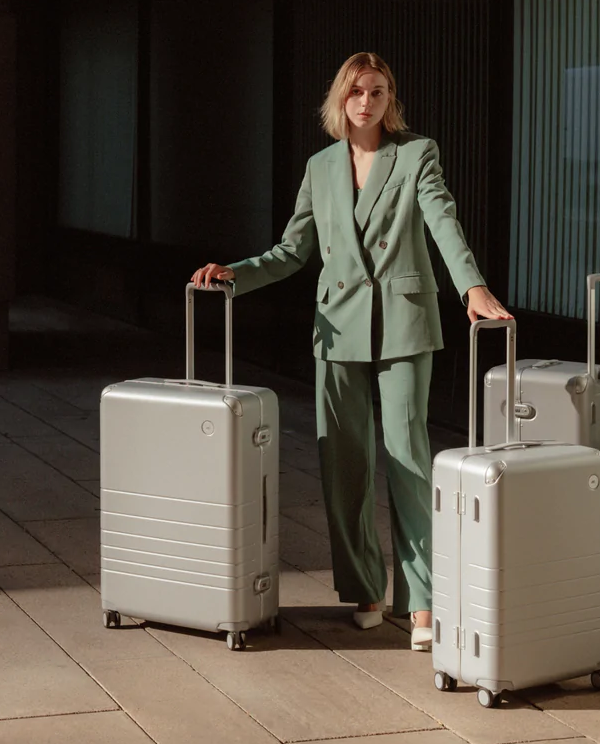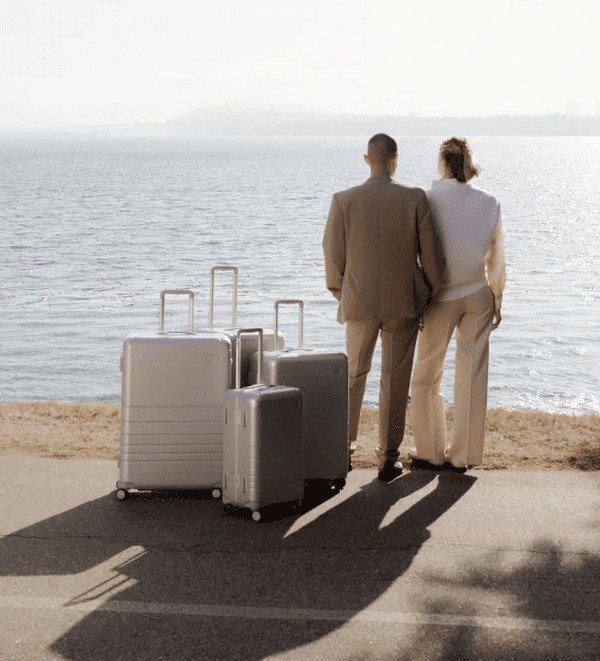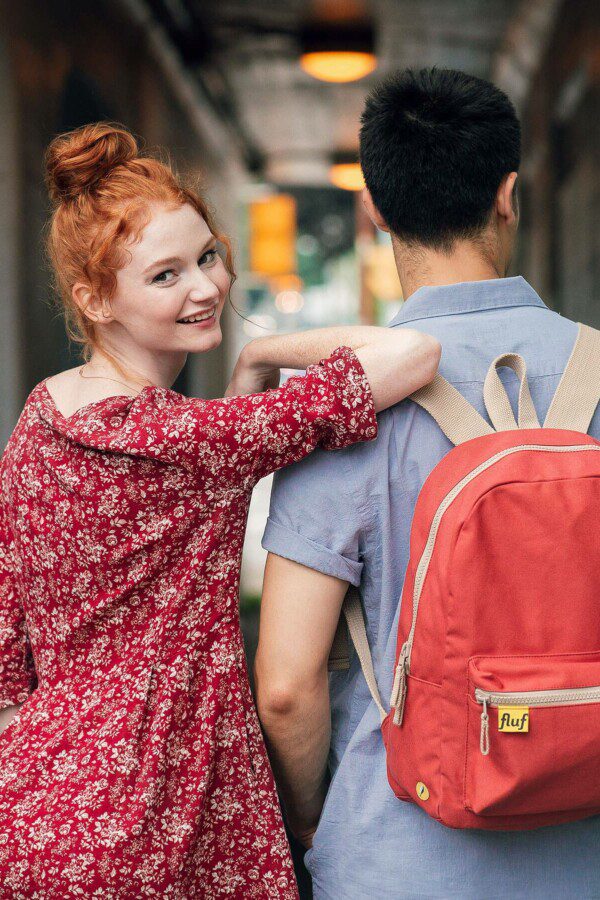In a Nutshell:
- Most activewear is just plastic.
- In recent years, testing has found endocrine-disrupting chemicals in workout clothing. Since many of these chemicals are water soluble, they can leach into your skin via sweat during your workout.
- The problem is that it’s very difficult to find 100% natural/organic activewear (especially leggings) because they need to be stretchy and have performance features.
- But, there are some great brands out there making strides when it comes to make healthier, non-toxic activewear!
- Some of the best brands include:
- Scroll down for even more options!
These days, there’s no shortage of activewear brands using recycled plastic bottles to make their leggings and other workout attire. Many of these brands are not only just as (or more!) high-quality as your more ‘conventional’ brands like Lululemon, but by using recycled instead of virgin synthetics, they’re more sustainable, too. I was an early adopter of the Girlfriend leggings (when they first launched, they sold them at wholesale prices!), and I’m still a fan. Over five years later and I still wear those original leggings.
And while apparel made from recycled materials has its pros, it’s not really a perfect solution, either (which we’ll talk about more in a minute).
What if you want activewear that’s completely plastic-free? Sure, there are plenty of great natural and organic clothing brands for everyday wear, but it’s harder to find natural workout clothes that can truly compete with the fit and function of petroleum-based fibers like spandex, nylon, elastane, etc.
So in this article, we’re breaking down the pros and cons of synthetic and natural workout clothes and then giving you our favorite brands to help bring some natural and organic style to your workout.
Ready, set, let’s go.
Table of Contents
This article contains affiliate links, which means we may earn a commission if you choose to make a purchase (at no extra cost to you). As always, we make genuine recommendations for brands we believe in. Featured Image Credit: Mate
Your Lululemon Leggings Are Made Out Of Oil
Most people exercise to feel good and stay healthy—both mentally and physically. And almost all activewear is made from petroleum-derived products (a.k.a. plastics) like nylon, lycra, elastane, and spandex. So is the fact that almost all of our activewear is made out of fossil fuels a little bit, well, counterproductive? Here we are making moves for our health while air pollution (largely from fossil fuels) lowers global life expectancy by more than two years.
Of course, I’m definitely not suggesting you stop working out just because your clothes are made of petroleum products. But I don’t know if the majority of consumers have consciously thought about the fact that their leggings are made out of oil. (Which is not only a problem from a sustainability standpoint but also an economic one, as LuLulemon raised their prices last year due to petroleum inflation).
Is Activewear Made from Recycled Plastic Actually Sustainable?
As mentioned in the intro, there are a lot of brands reducing the need for virgin plastics by recycling plastic bottles into activewear. Popular DTC brands like Girlfriend and Wolven are made almost entirely from recycled materials, and even bigger brands like Athleta now have recycled collections.
And while this is certainly better than nothing, using recycled materials has its downfalls, too.
1. For one, we don’t always know what’s in recycled plastic materials (or even clothes made with virgin materials, for that matter). Although we’re in need of more research in this area, some studies show that recycled plastic leeches more toxic chemicals (such as BPA) than virgin plastic.
2. Second is the microplastics problem. Clothing made from recycled plastic still won’t biodegrade at the end of its life. Instead, it will shed tiny little plastic pieces each time you wash or wear it, causing even more problems for human and environmental health. A small portion of the recycled apparel on the market might end up getting recycled again, but most of it will likely end up in landfills, further contributing to our plastic crisis.
3. Lastly, our recycling systems are quite honestly a bit of a mess; only about 5% of plastic gets recycled in the U.S. Plus, using recycled plastic doesn’t decrease our need for plastic on the whole, and brands may even justify their use of virgin materials by saying it’s ‘recyclable.’
Instead of (or at least in addition to) trying to increase the market for recycled plastic products, it might be wiser in the long-term to reduce the need for plastic goods altogether.
But Does 100% Natural & Plastic-Free Activewear Even Exist?
Using natural and organic fabrics is one good solution to our plastic clothing problem. Although they still require natural resources to make, they’re not made from fossil fuels. Renewable materials like organic cotton, wool, hemp, linen, and bamboo can make for great wardrobe staples.
Except… When it comes to activewear specifically, we’ve got a problem.
These natural fabrics just don’t have the same stretch that synthetics do, and they don’t usually hold their shape over time (so the fit might get looser as your workout goes on).
For this reason, you likely won’t be able to find much activewear (yet) that’s 100% natural AND has the same performance capabilities that synthetic clothing does. You’ll notice that most of the brands below use anywhere from 3% to 11% synthetic stretch fibers in their fabric blends in order to get that fit you want from a good pair of leggings.
There are a few exceptions, like Arms of Andes (which uses 100% wool) and Iron Roots (but they don’t have leggings yet).
So, What’s the Solution?
Plant-Based Semi-Synthetics FTW
One of the best options available right now involves plant-based fabrics. You’ll find that many of the brands below use TENCEL, which is a fabric made from trees. It’s processed using a closed-loop system, so even though it can’t be considered “100% natural,” it’s still a pretty good non-toxic fabric option. Plus, it’s soft, durable, and performs well.
There are also brands like Vitamin A and Pangaia beginning to use other plant-based fabrics like nylon that’s made from castor bean oil instead of fossil fuels. Although the process used to make these fabrics is probably relatively intense, it’s still a better option than your standard polyester.
My hope is that some brilliant minds will come up with a way to create stretchy, high-performance materials out of low-impact, truly biodegradable fabrics. But for now, considering that 100% natural and plastic-free workout clothes are hard to find, here’s what I suggest:
- Use what you already have.
- When buying new, choose brands that prioritize natural & organic fabrics (like the ones below) to at least decrease the plastic in your clothing by 89-97%.
- Try not to let perfect be the enemy of good. Make the best decision you can and then relax and enjoy moving your body!
One more thing: you’ll also want to consider not just the fabric itself but also what’s added to it. Manufacturers can and do add various toxic chemicals to clothing for various reasons, like to dye it or to make it “moisture wicking” or “shrink resistant.” These include things like azo dyes, formaldehyde, PFAS, and more. The brands featured below avoid these types of potentially harmful additives.
17 (Almost) Plastic-Free Activewear Brands Using Natural & Organic Fabrics
Alright, now let’s get on with it. Here are our favorite activewear brands using natural and organic fabrics as much as possible:
1. MATE
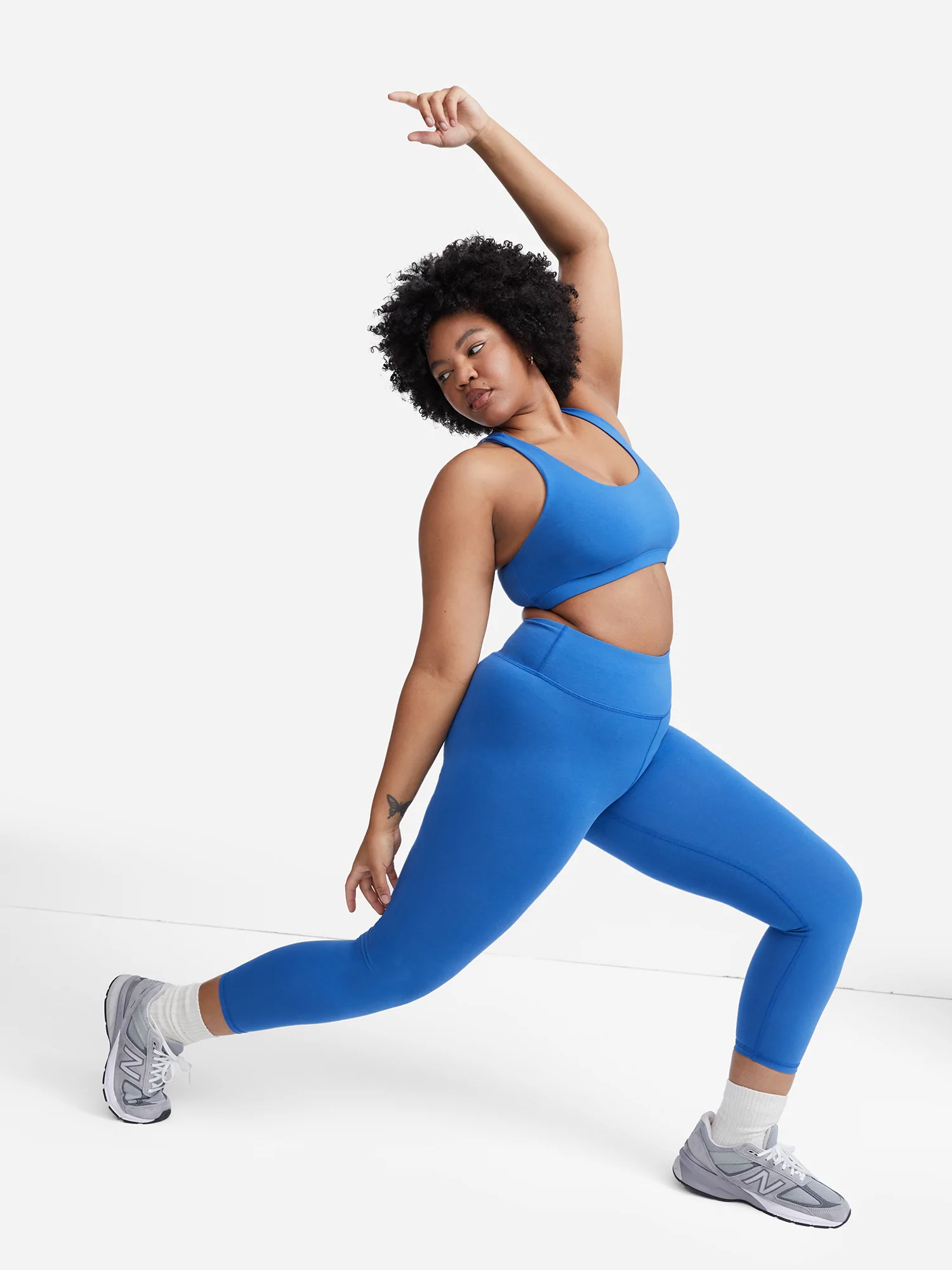

Fabric Breakdown: 92% organic cotton & 8% spandex
Price Range: $46-$68
Size Range: XS-3X
MATE is one of our favorite brands for non-toxic and organic everyday wear for women. Their MOVE by MATE activewear collection includes sports bras, biker shorts, and leggings that come in earth-inspired colors (as well as your standard black and white). You’ll probably want to wear these pieces not just for your workouts but also for running errands, lounging around, working from home, and just about everything else…
In addition to using as many organic materials as possible, MATE also uses non-toxic dyes and ensures ethical manufacturing (right in Los Angeles). They’re also a member of 1% for the Planet and Climate Neutral Certified.
2. PACT

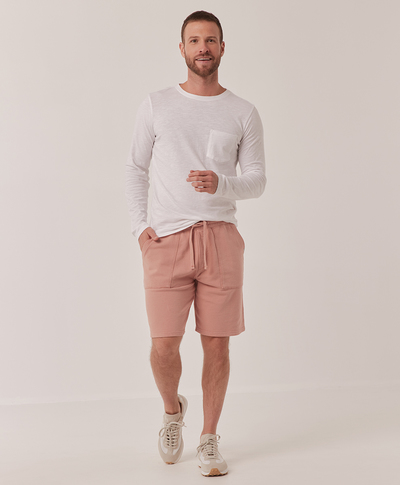
Fabric Breakdown: 89% organic cotton & 11% elastane
Price Range: $16-$70
Size Range: XS-2X
You’ll find PACT in a lot of our guides to organic clothing and underwear… Not only do they use GOTS certified organic cotton and Fair Trade certified factories, but their clothing is very affordable and practical for the whole family.
Their organic activewear collection includes leggings, bike shorts, tees & tanks, sports bras, and plenty of athleisure, too. In addition to your solid blacks & blues, they also offer fun patterns like “Mod Leopard Green” and “Paint Splash Bright.”
In addition to their extensive women’s activewear collection, they also offer natural workout clothes for men and plenty of play clothes for kids, too.
Use the code THEFILTERY15 for 15% off full-priced items.
3. Iron Roots
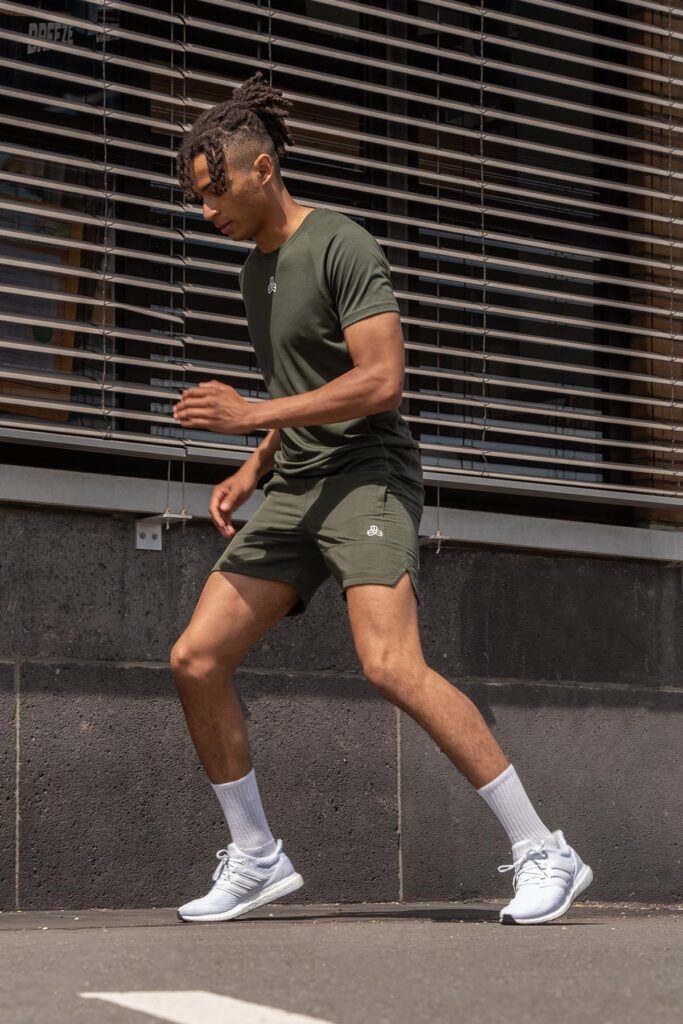
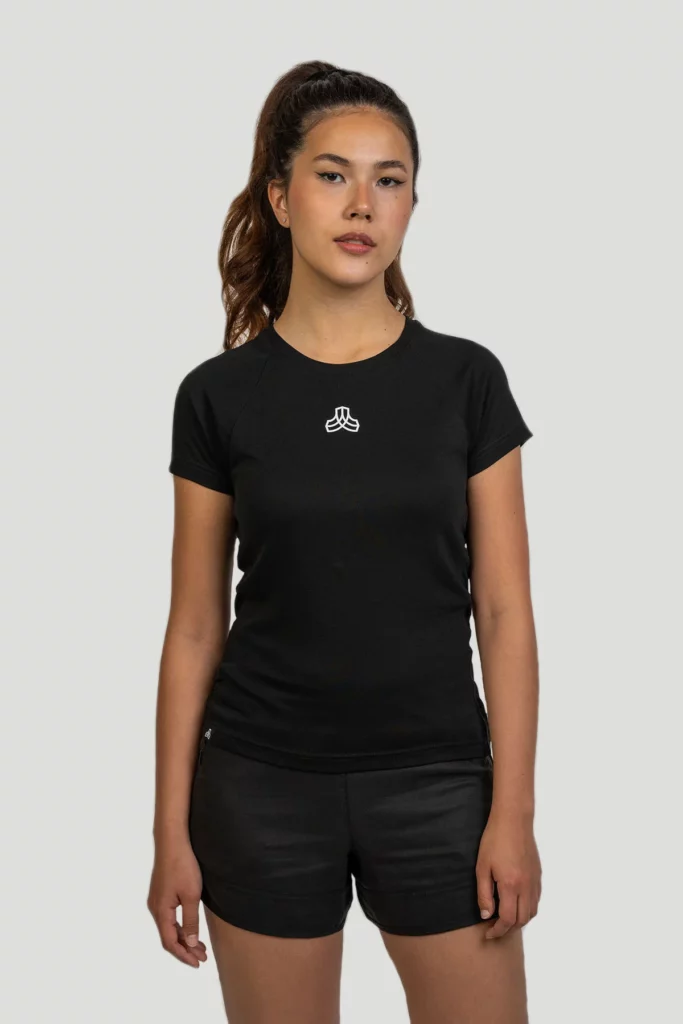
Fabric Breakdown: TENCEL, organic cotton, hemp (100% plastic-free)
Price Range: $45 – $100
Size Range: S-2XL
Iron Roots is a completely plastic-free activewear brand that uses primarily TENCEL modal and lyocell (with some hemp and GOTS certified organic cotton worked in there as well). Their TENCEL is primarily sourced from FSC certified eucalyptus and beechwood trees in Europe.
The brand is headquartered in The Netherlands, and they source and produce their sportswear as locally as they can (mostly in Portugal and Greece). They are committed to a transparent and ethical supply chain, working with SMETA certified factories that they visit on a regular basis.
Iron Roots’ current collection includes shorts, joggers, tees, and sweats for both men and women. They don’t have any leggings right now, but they’re working on it!
4. Happy Earth


Fabric Breakdown: 95% organic cotton, 5% elastane
Price Range: $36-$68
Size Range: XXS-2XL
Happy Earth has a great collection of organic workout clothes for women, including leggings, flared pants, shortsleeved shirts and tanks, long-sleeved tops, and shorts.
A lot of their pieces are reversible, so you can wear them in a variety of different ways. And they have pockets, too—a must for a hike in the forest or a run through the neighborhood.
This activewear is made out of 95% organic cotton and 5% elastane for a little bit of stretch. They’re made in Fair Trade certified factories in India using organic cotton that was locally grown, harvested, and dyed with certified non-toxic dyes.
5. Arms of Andes
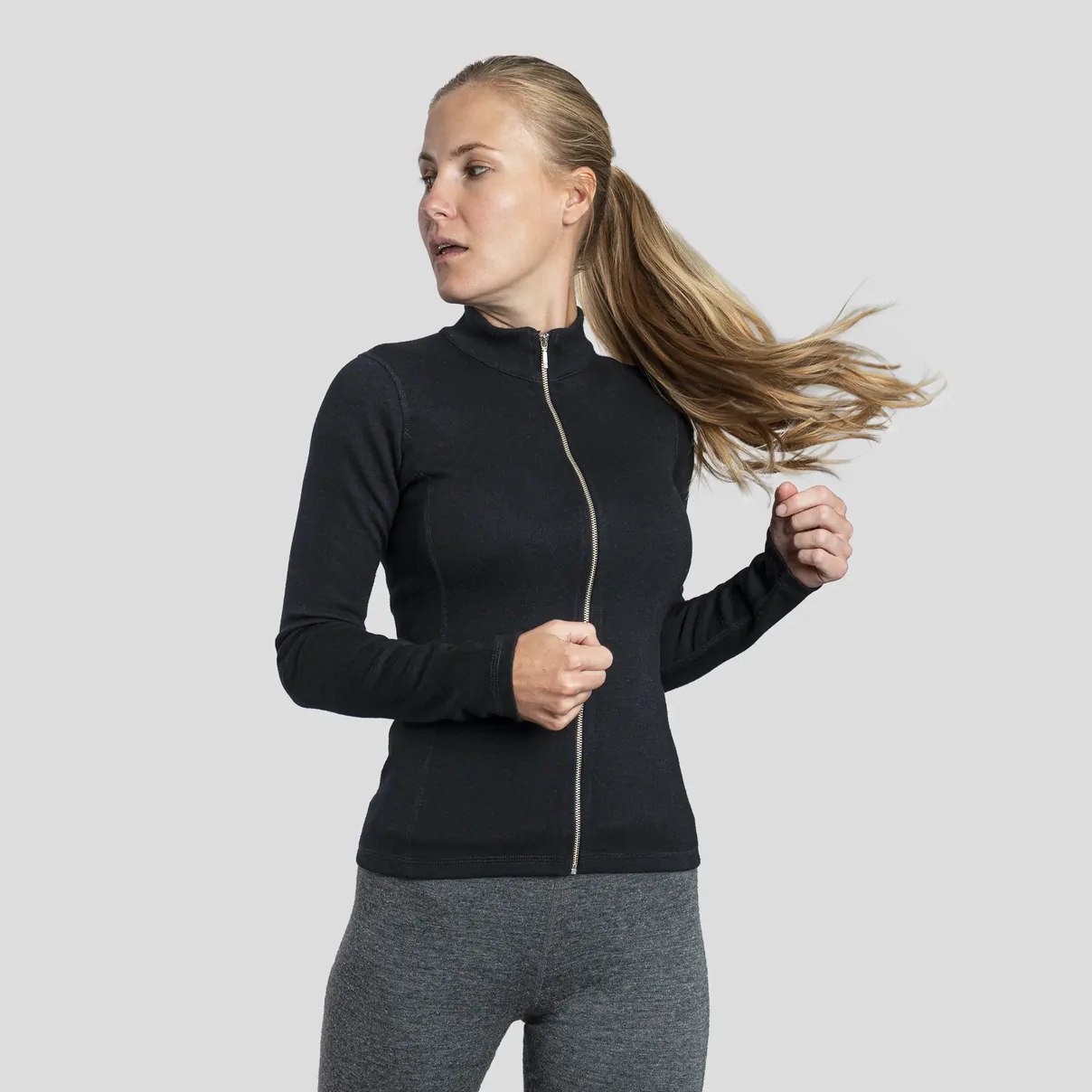

Fabric Breakdown: 100% alpaca wool
Price Range: $55-$250
Size Range: XS-3X
Arms of Andes is also one of the few brands that is 100% plastic-free. Because these natural workout clothes are completely free from synthetics, they’re not going to be quite as stretchy as the other brands listed here and they won’t hold their shape and tight-ness for quite as long. BUT if you’re definitely looking for 100% plastic-free activewear, you should definitely give Arms of Andes a try.
They offer a wide selection of natural apparel for men and women, including tees & tanks, sweatshirts, leggings, underwear, sports bras, joggers, and more. Great for hiking and outdoor workouts in colder weather, their collection makes for perfect layering and offers both mid- and light-weight versions of their pants and tops. Most of their offerings come in basic colors like blacks, blues, greys, and whites.
Oh, and if you’re wondering about alpaca wool as a performance fabric for workout clothes, it’s naturally a really great option. Because of the way these alpacas have evolved living in the high altitudes of the Andes Mountains, their wool fibers can handle drastic temperature shifts from sub-zero at night to super hot during the day. Plus, it’s naturally breathable and moisture-wicking. Obviously, this makes for great activewear, whether you’re heading out for a winter run or a hot yoga class!
Arms of Andes’ “Leave No Trace Apparel” initiative is pretty cool, too. It means that all of their clothing is made out of completely biodegradable fabric (and apparently they’re the first outdoor clothing brand to do so). The only exception is their zippers, which is something they’re working on. (They’ve recently managed to switch to 100% natural rubber for their elastic bands!) But besides that, all of the fabrics, threads, and non-toxic dyes are 100% biodegradable.
Plus, they’ve got a “single-origin supply chain,” which means they carry out every stage of production—from sourcing alpaca fiber to manufacturing the garments—in one country: Peru. Their ethically-sourced alpaca wool comes directly from herders in the Peruvian Andes, whose families have been employing traditional techniques to rear alpacas and harvest their fiber for generations.
6. Icebreaker
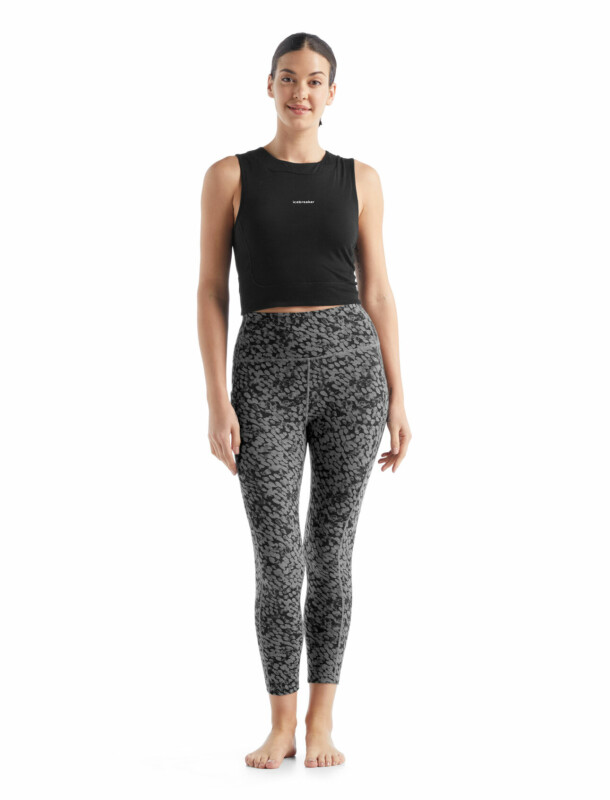
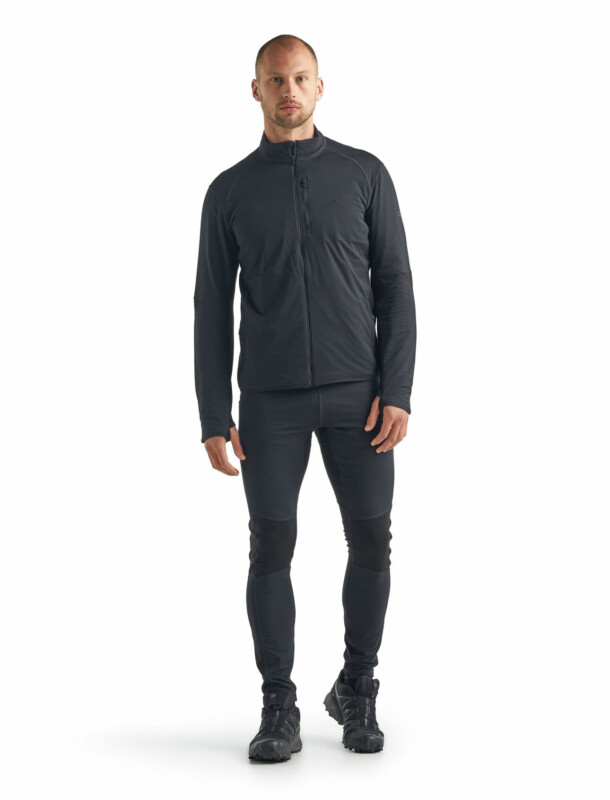
Fabric Breakdown: Mostly merino wool, elastane, & lycra (specific percentages vary by product)
Price Range: $50-$300
Size Range: XS-2XL
Made primarily out of merino wool, Icebreaker is a great brand for layering. In addition to their regular leggings, tanks, and tees, they also have various kinds of thermal leggings, zip-ups, athleisure apparel, and more. Although many of Icebreaker’s stretchier pieces do include a certain percentage of synthetics, they also offer some 100% natural merino clothing as well (like for their t-shirts, for example).
Merino makes for a great alternative to synthetic activewear because of its natural durability, moisture- and odor-wicking properties, and temperature regulation.
With plenty of offerings for women, men, and kids, Icebreaker probably has the widest variety of natural workout clothes for the whole family. And their website makes sorting easy, too—you can filter by activity (hiking, snow sports, running, lifestyle, etc.), by layer (base layer all the way to outer layer), by fabric, by price range, and more.
This transparent brand has various ethical and sustainable initiatives throughout its entire supply chain. For starters, they’ve developed deep, long-term relationships with the sheep herders they work with in order to make sure all of the animals and humans involved are treated ethically. Their “five freedoms of the flock” ensure that sheep live in safe, healthy, and comfortable conditions.
7. Groceries Apparel
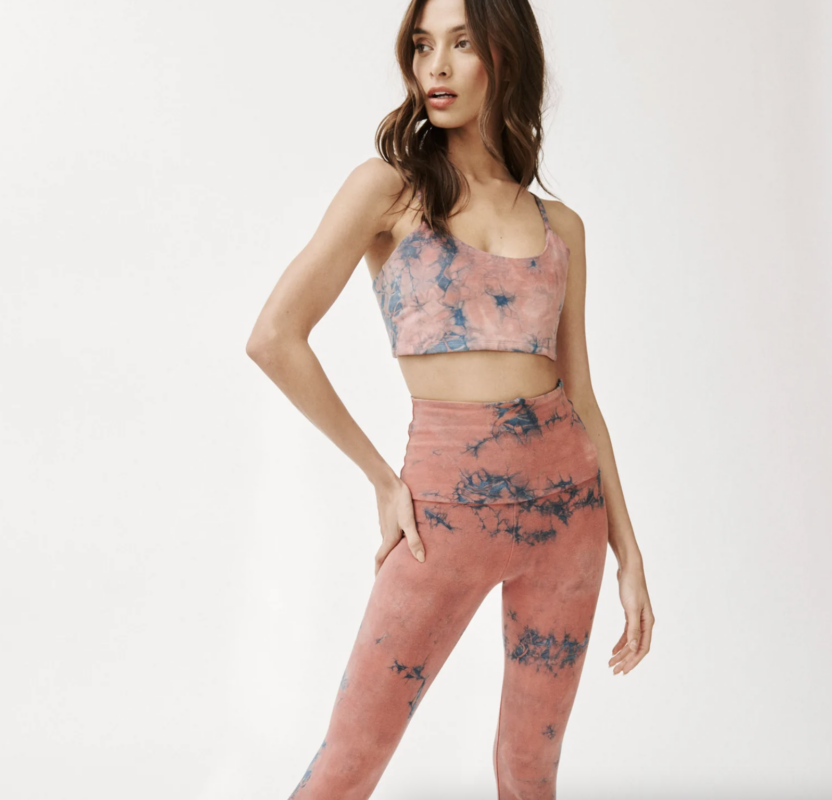

Fabric Breakdown: 92% organic cotton & 8% spandex
Price Range: $38-$88
Size Range: XS-XL
Groceries’ organic activewear is made in Los Angeles and includes several different styles of leggings, shorts, sports bras, and workout tanks. They offer some bright and fun colors, including things like “Carrot Tops + Pomegranate Tie Dye” and “Weld Flower.”
These non-toxic workout clothes are dyed with vegetable-based dyes like pomegranate, carrot tops, onion skins, roots, bark, flowers, and real indigo. And they actually source a lot of their dye materials (like used coffee grounds and avocado stones/skins) from local grocers and restaurants around Los Angeles—how cool is that?
8. Cottonique
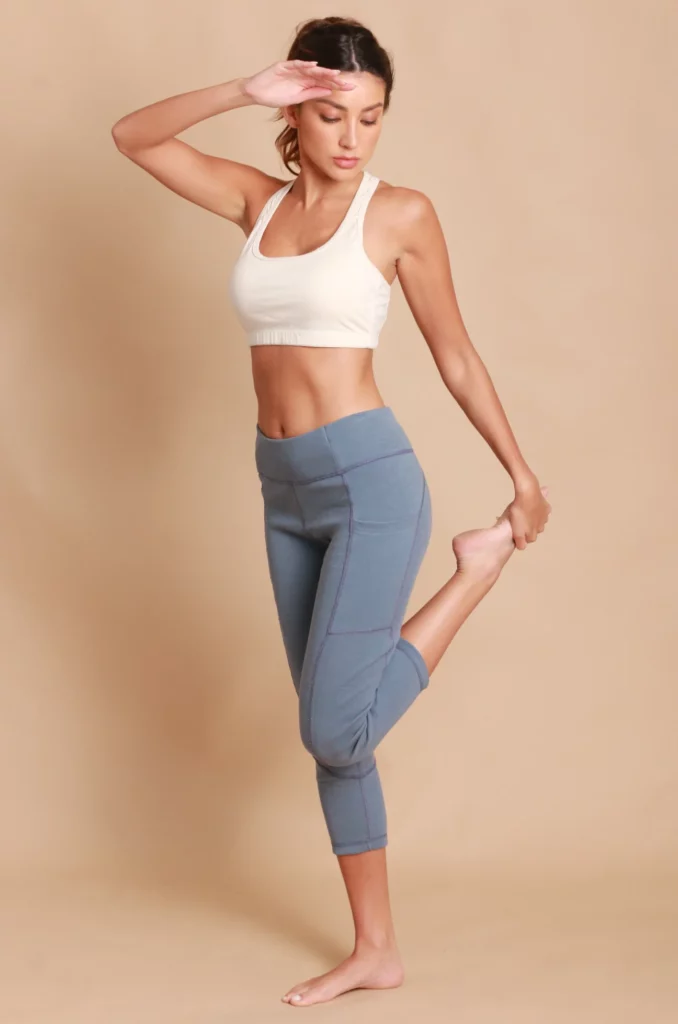
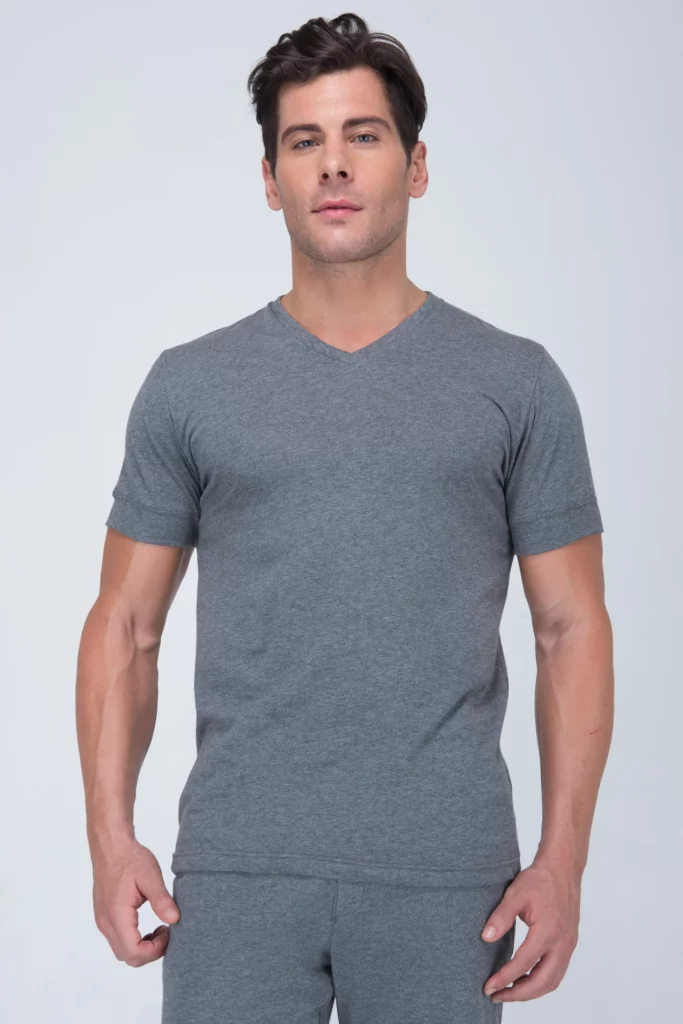
Fabric Breakdown: 100% organic cotton
Price Range: $17 – $55
Size Range: S-2XL
Cottonique’s apparel is made especially for those with allergies, eczema, and other sensitivities. They don’t have a ton of options in terms of activewear, but they do offer tees, tanks, joggers, sports bras, and a couple pairs of leggings.
Since this allergy-friendly activewear is made for sensitive skin, it only uses 100% organic cotton and is free from rubber and latex, harsh dyes, and chemical finishes. Just be aware that because of the fact that their organic workout clothes don’t include any synthetics, their leggings and bras aren’t going to be as stretchy as some of the other options. (But your skin will be happier!)
Use the code THEFILTERY10 for 10% off.
9. Organique


Fabric Breakdown: TENCEL, organic cotton, elastane
Price Range: $54 – $187
Size Range: S-XL
Organique carries both sweats and loungewear as well as more form-fitting activewear like leggings and even a couple of bodysuits and jumpsuits!
Their sweats are made primarily out of GOTS certified organic cotton, while their stretchier pieces utilize TENCEL combined with a little organic cotton and elastane.
The brand is based in Portugal, where its founder was raised. That’s also where all of their clothing is produced, as well!
10. Maggie’s Organics

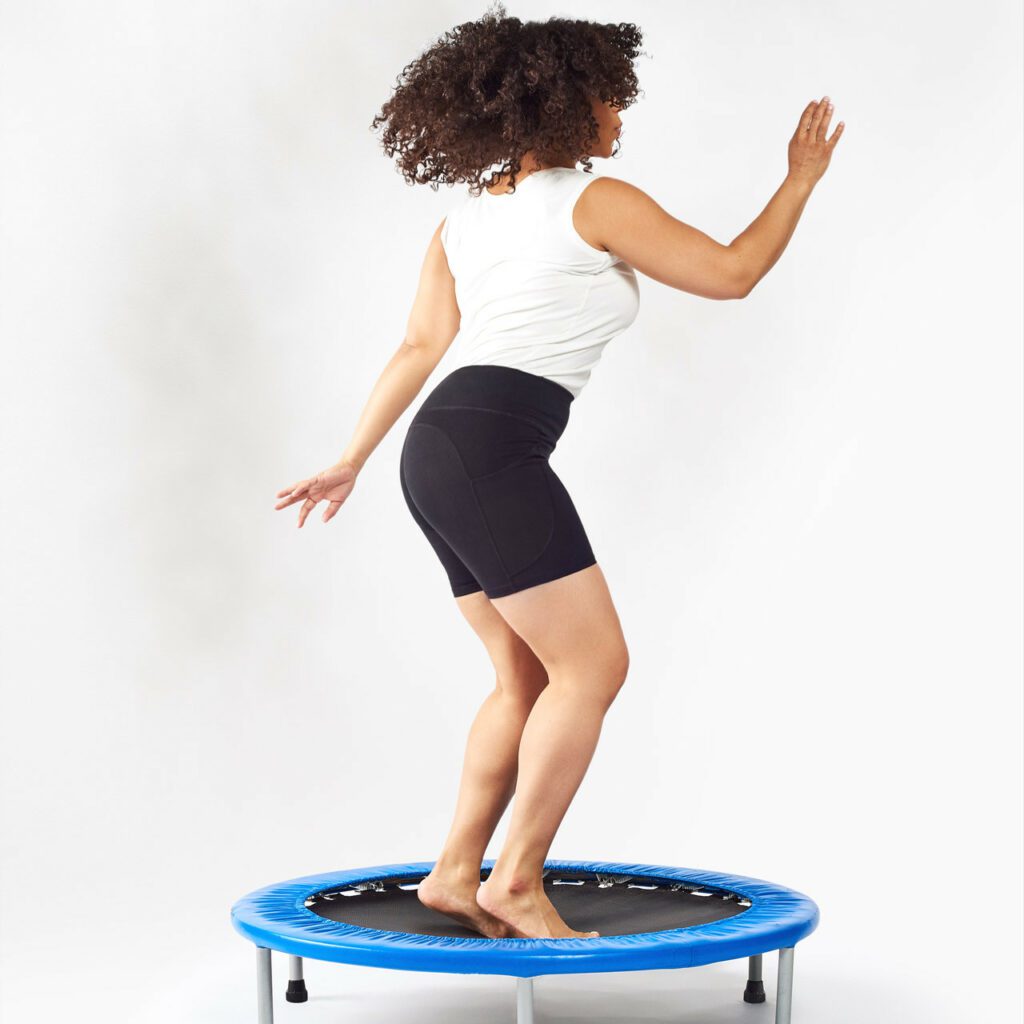
Fabric Breakdown: 90% organic cotton & 10% spandex
Price Range: $29-$61
Size Range: S-2XL
Maggie’s Organics might be more well-known for their socks, but they have leggings, too! They have several different styles, including Blackout Leggings (which are best for working out and are available in ankle, midcalf, and short), Base Layer, Ribbed, Fleece, and Tulip Skirted.
They also have various tanks and tees which can be worn for working out as well. They do have a few options for men, but not as many as they do for women.
Maggie’s Organics sourceds their organically grown cotton and wool from small farms in the U.S., Argentina, Peru, Tanzania, and India. Committed to an ethical and sustainable supply chain, their garments are made by union workers in India and come with several different third-party labels, including World Fair Trade Organization (WTFO) and Global Organic Textile Standard (GOTS).
11. Purusha People


Fabric Breakdown: 92/88% TENCEL & 8/12% spandex
Price Range: $78 – $169
Size Range: XS-3XL
Purusha People’s yoga-inspired feminine activewear is made primarily out of TENCEL (which they call “forest fiber”) that’s sourced from Eastern European forests. They offer various styles of pants (including leggings, bell bottoms, yogini pants, joggers, and boyshorts), jumpsuits, sports bras, and underwear. They’re all colored using GOTS certified non-toxic dyes and screen-printed with water-based inks.
All of their pieces are made in the USA and have various sustainability initiatives woven throughout their model, including waste reduction wherever possible, living wages paid to workers, and a 10% non-profit give-back program.
12. Vitamin A


Fabric Breakdown: 77% Plant-Based Polyamide + 23% Lycra spandex fiber
Price Range: $135-$170
Size Range: 4/XS – 14/XXL/DD
Vitamin A’s ‘Plant-Based Swim’ collection actually includes activewear, too. Although Vitamin A does use recycled plastics in its core swim collection, this newer plant-based collection is actually made from castor bean oil instead.
The collection includes several different kinds of tops, along with leggings and workout shorts that come in various beautiful bold colors. These ‘BioSculpt’ pieces comfortably hug your body and have a smoothing, shaping, and supporting effect all at once.
I have a swimsuit from Vitamin A’s Plant-Based collection and I can say that the plant-based fabric and the BioSculpt design really does compete with other high-quality activewear. It feels like synthetic activewear, it’s comfortable, and it doesn’t lose even a little of its shape when it gets wet or sweaty.
Vitamin A’s Plant-Based Collection definitely comes in at a higher price point than most of the other brands on this list, but we’re hoping that as these fossil fuel alternative fabrics become more widely used, they will become more affordable.
13. Pangaia

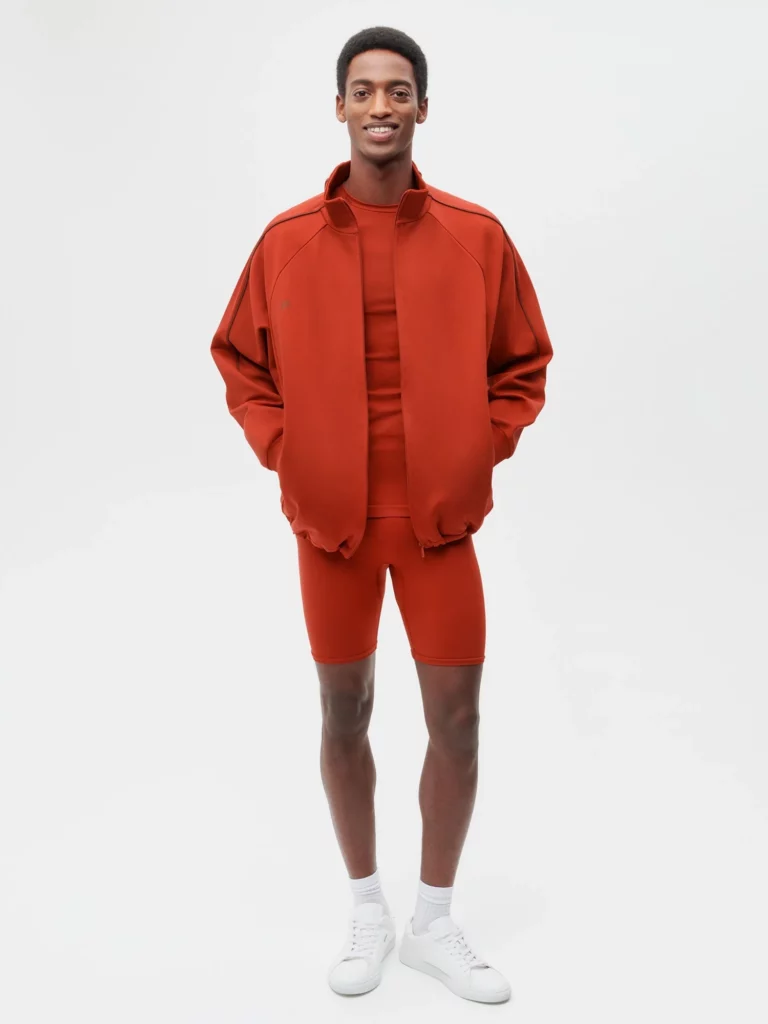
Fabric Breakdown: 92% Polyamide Biobased EVO® (99.9% biobased content), 8% Part Biobased, Creora® Elastane (30% biobased content) [Entire garment is 94.3% plant based]
Price Range: $60 – $130
Size Range: 2XS-XL
Similar to Vitamin A, Pangaia makes plant-based activewear using nylon that’s made from castor bean oil instead of petroleum. They have collections for both men and women, which include leggings, shorts, sport bras, tanks, tees, long-sleeved crop tops, and long-sleeved quarter-zips. It’s worth noting that they say their activewear is “designed for low-impact” workouts, running errands, and loungeing around—so this may not be the best choice for multiple HIIT workouts a week.
In addition to their stretchy activewear collection, Pangaia also has lots of other t-shirts, tanks, track pants, and other loungewear that can be worn for exercising as well. Most of these pieces are made out of 100% organic cotton.
Pangaia is also a certified B Corp company that is committed to sustainable innovation. They have various climate- and people-related goals throughout their supply chain, give-back initiatives, and more.
14. Boody


Fabric Breakdown: Bamboo viscose, organic cotton, spandex, & nylon (specific percentages vary by product)
Price Range: $44-$99
Size Range: XS-XL
Not all fabrics made from bamboo are created equal; many of them use toxic chemicals during the manufacturing process that are harmful to the workers and surrounding communities where the fabric is made. That’s why we recommend bamboo clothing carefully. (You can read more about this here.)
Boody’s bamboo apparel and underwear, however, are made using a closed-loop process, which means all of the potentially toxic solvents are captured and removed instead of getting dumped into waterways (where they can make their way into drinking water, crops, etc.).
For women, Boody carries natural activewear like leggings, sports bras, and bike shorts, along with more relaxed-fit athleisure pieces like tanks, sweatpants/shorts, and zip-up hoodies.
Their men’s activewear collection is smaller, but they do carry sweatpants & shorts, pullover & zip-up hoodies, muscle tees, and socks.
As far as colors go, Boody’s collection is for the timeless among us—you’ll only find blacks and other dark colors in their collection.
Boody carries various different eco-friendly certifications, such as Forest Stewardship Council (FSC), which means the bamboo is sourced responsibly; OEKO-TEX, which means the finished products are verified to be free from a list of toxins; and PETA-Approved Vegan. They also carry a few different third-party labels that ensure ethical production and they give back to various community organizations.
15. Reprise
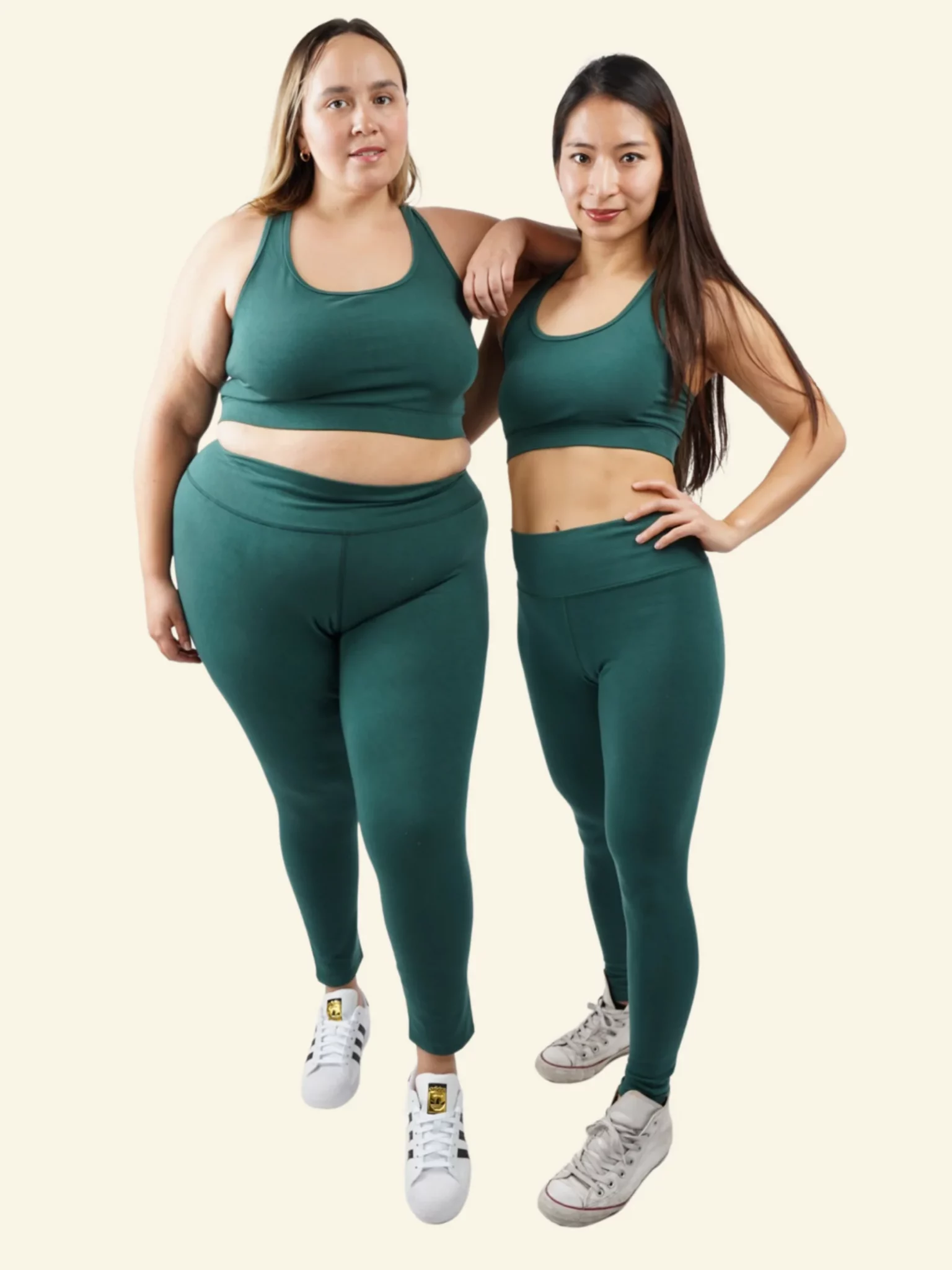

Fabric Breakdown: 93% TENCEL & 7% spandex (+ 100% organic cotton for sweats)
Price Range: $75-$125
Size Range: 0/00/XS – 38/40W/6X
Reprise is the most size-inclusive brand on this list. They carry leggings, bike shorts, and sports bras made out of eco-friendly, soft, and buttery TENCEL fabric. TENCEL is another plant-based (rayon) fabric that is made using a closed-loop manufacturing process and less toxic solvents.
Additionally, all of their dyes are certified non-toxic and organic by OEKO-TEX and GOTS. Everything is made ethically in the United States. Committed to transparency, you can find all of the details about their materials and manufacturing process (including the improvements they’re currently working on!) right here.
16. Nagnata
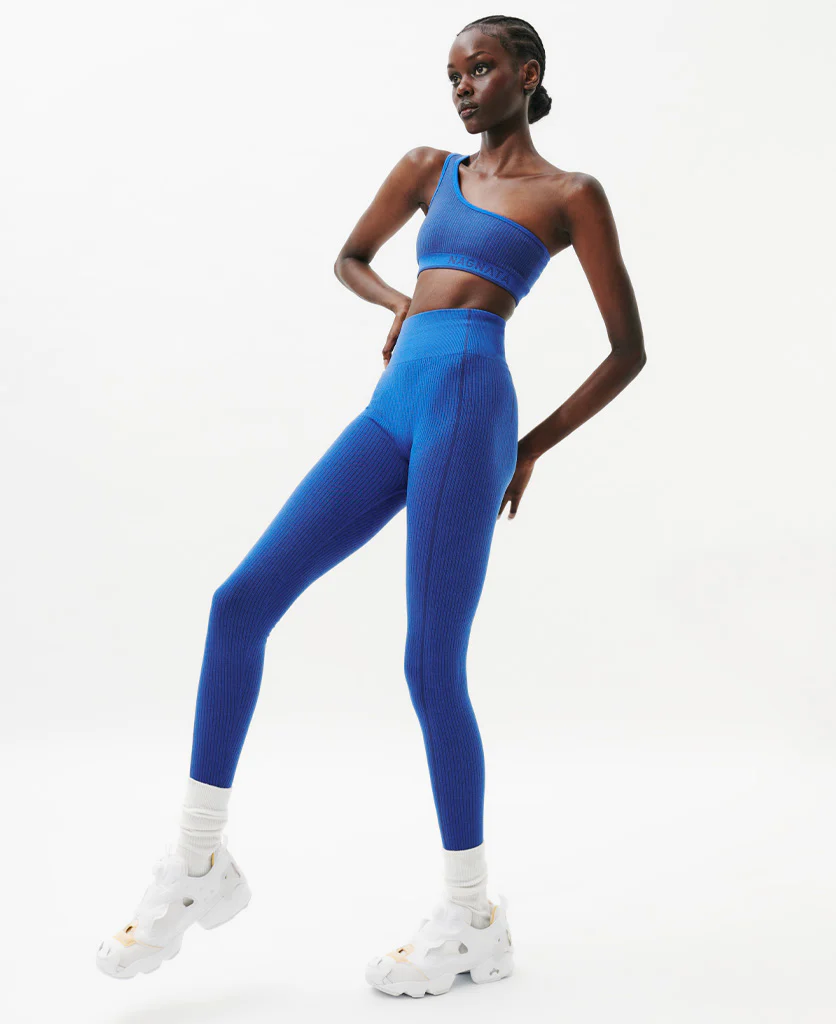

Fabric Breakdown: Merino wool, nylon, polyester, elastane (various percentages; depends on the garment)
Price Range: $108-$328
Size Range: XS-L
This is one of the few brands on this list that is not polyester-free. Although the primary material is merino wool (around 65-75% depending on the piece), they also mix in some synthetics for stretch and performance.
This AU-based brand’s movement collection is pretty robust: they have leggings, sports bras, shorts, tanks, and more. They also have options for everyday wear, too—like skirts, sweaters, and more. They carry men’s and genderless options as well.
We hope this guide has been helpful for you in choosing organic and non-toxic workout clothes! If you want more (exclusive) content delivered to your inbox once a week, sign up for Filtered Fridays.



